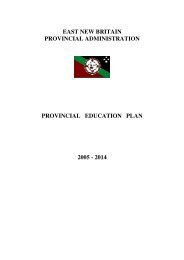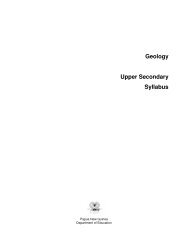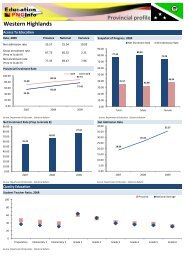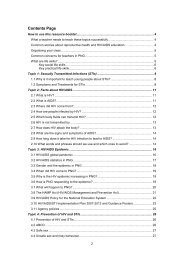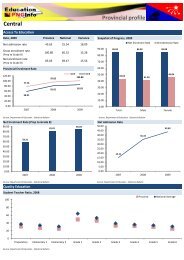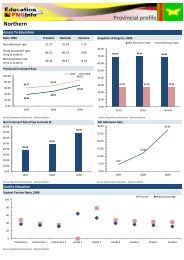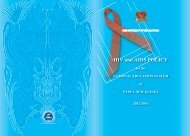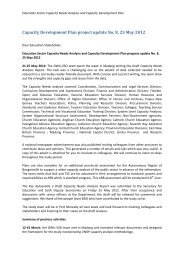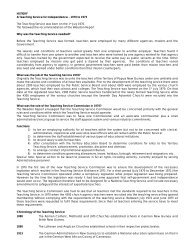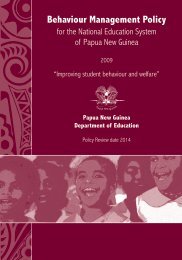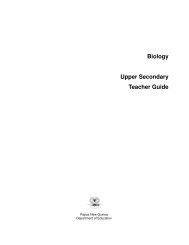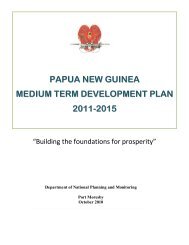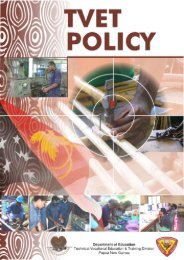Physical Education - Department of Education
Physical Education - Department of Education
Physical Education - Department of Education
You also want an ePaper? Increase the reach of your titles
YUMPU automatically turns print PDFs into web optimized ePapers that Google loves.
<strong>Physical</strong> education<br />
Introduction<br />
Purpose<br />
This Teacher Guide must be used in conjunction with the Lower Primary<br />
<strong>Physical</strong> <strong>Education</strong> syllabus. Its main purpose is to help you to implement<br />
the syllabus in your classroom.<br />
The guide provides you with guidelines and directions to help you plan and<br />
develop teaching and learning activities for the achievement <strong>of</strong> the learning<br />
outcomes. It also provides you with information and processes to:<br />
• use the elaborations to identify relevant content (knowledge, skills and<br />
attitudes) and contexts<br />
• develop units <strong>of</strong> work based on clusters <strong>of</strong> learning outcomes relevant to<br />
your students’ needs and interests<br />
• select appropriate teaching and learning strategies<br />
• plan a suitable school-based program<br />
• plan and conduct assessment to monitor students’ learning and<br />
achievement <strong>of</strong> learning outcomes.<br />
Using this teacher guide<br />
When you receive your Lower Primary syllabuses and teacher guides, you<br />
need to do the following:<br />
• read each teacher guide carefully<br />
• become familiar with each syllabus, its strands and substrands<br />
• select one subject, then read the outcomes and indicators for that subject<br />
• read each section <strong>of</strong> that subject, teacher guide again and take note <strong>of</strong><br />
the ideas, strategies and processes that you think will be useful to you<br />
• repeat these steps for the other subjects<br />
• meet with other teachers, share your ideas and plan how you will work<br />
together to write programs and units <strong>of</strong> work<br />
• be ready to try out some <strong>of</strong> the units <strong>of</strong> work in the teacher guides<br />
• be confident to write your own programs and units <strong>of</strong> work using the<br />
information in one or more <strong>of</strong> the teacher guides and subject syllabuses.<br />
Bilingual education<br />
Bilingual education is the regular use <strong>of</strong> two languages for instruction. With<br />
over 800 different languages spoken across Papua New Guinea, most<br />
students do not speak English as their first language. In Lower Primary<br />
teachers will use a bilingual approach to teaching and learning, using both<br />
vernacular and English to develop students’ understanding <strong>of</strong> the learning<br />
outcomes.<br />
Lower Primary uses a bilingual approach as there are academic benefits for<br />
students being bilingual. Students should continue to learn in their first<br />
language because learning only in English as a second language can limit<br />
1



